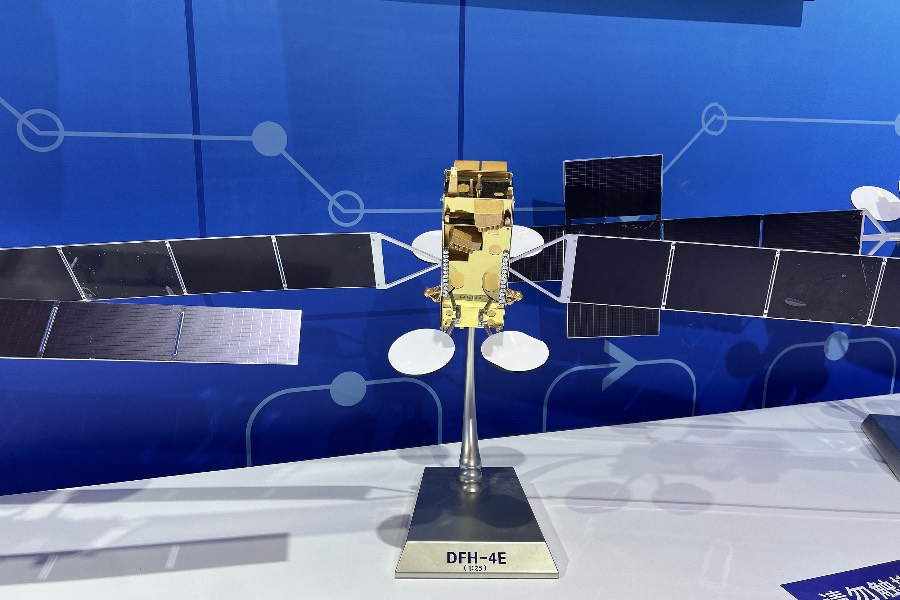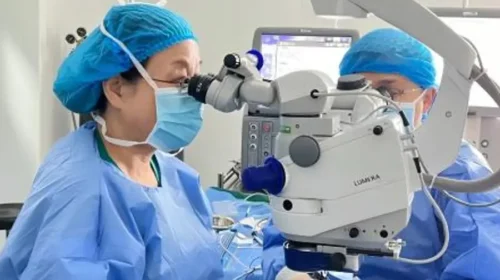Riding on space fever, Adaspace rockets towards Hong Kong listing

The private satellite company is planning a Hong Kong IPO, hoping to entice investors with a chance to buy into China’s race into space
Key Takeaways:
- Adaspace has filed to list in Hong Kong, operating a fast-growing business providing satellite-building and other satellite-related services
- The company’s losses continue to widen on heavy R&D and administrative spending
By Bai Xinrui
Billionaire entrepreneur supreme Elon Musk has raised the commercialization of space to new heights, not only through his SpaceX rocket-launching company, but also through his Starlink satellite internet network. Now, Chinese satellite builder and related services provider Chengdu Adaspace Technology Co. Ltd. is hoping to ride that space craze to its own high valuation as it flies towards a Hong Kong IPO.
Adaspace is a relative newcomer to space, founded just seven years ago in 2018 by Lu Chuan, who has nearly 20 years of experience in AI, aerospace and communications engineering research. Third-party market data in the company’s listing document, first filed late last month and updated this week, shows Adaspace ranks eighth in China’s satellite-related business market, and is the country’s leader in terms of cumulative AI satellite launches by a private commercial aerospace company.
Lu is the company’s largest shareholder, with a combined 33.6% held by two of his other companies, Beijing Xingrong Yuhang and Beijing New Era Space, according to the listing document. The next largest stakeholder is Galaxy Industry Group with 10%, followed by others including Shenzhen Capital Group with 3.9%, and SME Development Fund with 1.3%.
China has been actively moving to bring more private investment into its commercial space industry, taking steps like optimizing its regional layout and offering other incentives to drive growth. The entire industry’s output value rose sharply from just 800 billion yuan ($109 billion) in 2019 to 1.9 trillion yuan in 2023, growing 24.1% annually, according to the listing document. That growth could accelerate as satellite launches increase, with the market expected to grow 25.9% annually from 2023 to reach 6 trillion yuan by 2028.
China’s commercial aerospace industry consists of both private and state-owned companies engaged in the development and production of vehicles, rockets and related equipment. One major area within the sector is satellites, which is broadly divided into three main sectors: satellite development, launch and operations/applications.
Satellites are typically used to gather high-precision data that can be used to improve decision-making and operational efficiency through improved communications, environmental monitoring, disaster management and more. AI has also entered the mix more recently, assisting in things like data analysis and calculation services to enhance satellite functions.
Three-stages of development
Adaspace says it’s committed to developing cost-effective and user-friendly commercial satellites to build an integrated space-ground AI infrastructure through a three-stage roadmap. In the company’s first stage from its inception to 2022, it mainly focused on independently developing AI application satellites.
In its current second stage, from 2023 to 2027, its focus has shifted to enhancing the depth and scope of its self-developed satellite-based solutions and accelerating development of AI applications into intelligent computing satellites. In its third stage from 2028 onwards, the company will focus on operating its globally integrated space-ground AI infrastructure to provide commercial satellite-based solutions and space-based computing services.
Adaspace divides its business into two main parts. The largest is satellite-based solutions, which accounted for 81.5% of revenue in the first three quarters of 2024. Such solutions collect remote sensing satellite data and process it through the company’s self-developed Lingjing Engine using AI algorithms. That allows two-dimensional data to be quickly transformed into high-precision three-dimensional digital models, which can be applied in many areas like digital cities, urban governance, culture and travel, sports and game applications.
Surging R&D expenses
Adaspace’s satellite-based solutions business has been growing quite rapidly. Its revenue reached 193 million yuan in the first three quarters of last year, surging by 135% year-on-year. Gross profit for that part of the business rose by an even more turbocharged 312% over that time to 60.7 million yuan, as its gross margin soared by 13.5% percentage points to 31.4%. The company said the rapid growth was fueled by more profitable application scenarios for its satellite-based solutions.
Despite the meteoric growth, the company still operates squarely in the red, and its losses are getting bigger. Those include a 214 million yuan loss in the first three quarters of 2024, nearly double the previous year’s loss of 111 million yuan during that period. Huge R&D spending is largely to blame. That portion of the company’s expenses surged by 3.4 times year-on-year to 105 million yuan in the first three quarters of 2024 alone, accounting for 44.2% of total revenue.
In addition, fast-climbing general and administrative expenses are also affecting Adaspace’s profitability. In the first three quarters of 2024, that part of its spending totaled 131 million yuan, up 50.8% year-on-year, accounting for 55.2% of total revenue. Adaspace attributed the fast rise to increased employee benefits arising from share-based payment.
Meanwhile, investors may also want to note that Adaspace’s revenue base, not surprisingly, is highly concentrated in a small number of customers for its specialized services. Its largest customer, a company engaged in technology R&D and promotion in Southwest China’s Sichuan province, accounted for a whopping 73% of the company’s revenue in the first three quarters of 2024.
Such heavy reliance on a single customer is typically a major risk factor, since the company will inevitably take a large hit if that customer leaves or cuts back its orders due to financial difficulty or for other reasons. Moreover, such customers can take advantage of their clout to demand lower prices or other more favorable terms, which will undermine Adaspace’s revenue and profitability.
All told, Adaspace is hardly alone among the many global space-concept companies stuck in a vicious cycle of high R&D spending and growing losses. It also has its own company-specific issues, led by its heavy reliance on a single customer and high administrative expenses. Such factors may give investors pause as they consider whether to take this opportunity to buy into China’s race into space.
To subscribe to Bamboo Works weekly free newsletter, click here






